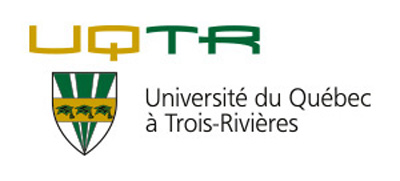Related projects
Discover more projects across a range of sectors and discipline — from AI to cleantech to social innovation.
Mitacs brings innovation to more people in more places across Canada and around the world.
Learn MoreWe work closely with businesses, researchers, and governments to create new pathways to innovation.
Learn MoreNo matter the size of your budget or scope of your research, Mitacs can help you turn ideas into impact.
Learn MoreThe Mitacs Entrepreneur Awards and the Mitacs Awards celebrate inspiring entrepreneurs and innovators who are galvanizing cutting-edge research across Canada.
Learn MoreDiscover the people, the ideas, the projects, and the partnerships that are making news, and creating meaningful impact across the Canadian innovation ecosystem.
Learn MoreDue to advances in low-power wireless communications, low-power analog and digital electronics, the development of low-cost and low-power sensor nodes that are small in size has received increasing attention. Sensor nodes have the ability to sense the environment nearby, perform simple computations and communicate in a small region. Although their capacities are limited, combining these small sensors in large numbers provides a new technological platform, called Wireless Sensor Networks (WSNs). WSNs provide reliable operations in various application areas including environmental monitoring, health monitoring, vehicle tracking system, military surveillance and earthquake observation
Wireless Sensor Networks consisting of nodes with limited power are deployed
to gather useful information from the field. In WSNs it is critical to collect the information
in an energy efficient manner.
In this project, we will present a new protocol for WSN routing operations. The protocol is
achieved by using metaheuritics algorithms (such as Ant Colony Optimization algorithm, Hybrid Genetic Particle Swarm Optimization Algorithm, and Hybrid Simulated Annealing Algorithms ) based optimization technique in network routing to optimize routing paths, providing an effective multi-path data transmission method to achieve reliable communications in the case of node faults. We will aim to maintain network life time at a maximum, while data transmission is achieved efficiently, so an adaptive approach is developed according to this goal. The proposed approaches are compared to a well known other algorithms such as ant based algorithm named EEABR using an event-based simulator. Our goal is to offer significant reductions of energy consumption which is used as a performance metric for different sized WSNs. Also, we will implement our approach on a small sized hardware component requiring minimum connections suitable for tiny node designs and we will develop an methods for handling the routing tasks by using the proposed approaches router chip. We will test our alhorithms running on the router chip and obtain their performance results, including response times of the chip.
Response time of the header request for the routing operation would be satisfactory for many WSNs where transmission speed is not essential. The proposed approaches for WSN routings and its hardware implementation seem to be a very good potential/ promising solution for node designers. WSN settings, including nodes having high mobility.
Mohamed Tawhid
XIAODOU WU
Mathematics
Thompson Rivers University
Globalink
Discover more projects across a range of sectors and discipline — from AI to cleantech to social innovation.
Find the perfect opportunity to put your academic skills and knowledge into practice!
Find ProjectsThe strong support from governments across Canada, international partners, universities, colleges, companies, and community organizations has enabled Mitacs to focus on the core idea that talent and partnerships power innovation — and innovation creates a better future.













































































































































































































































































































